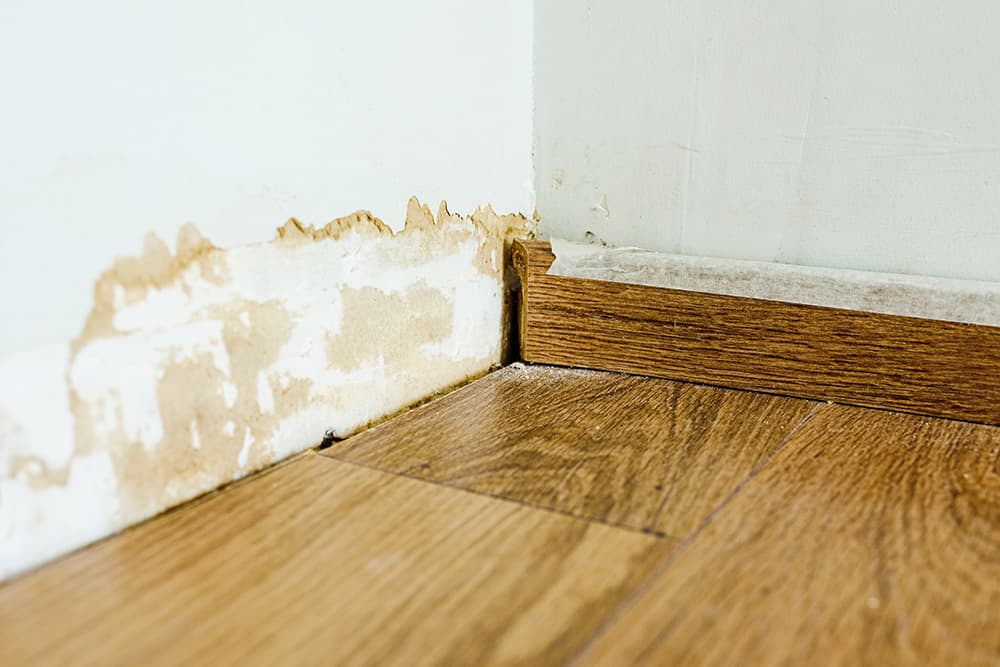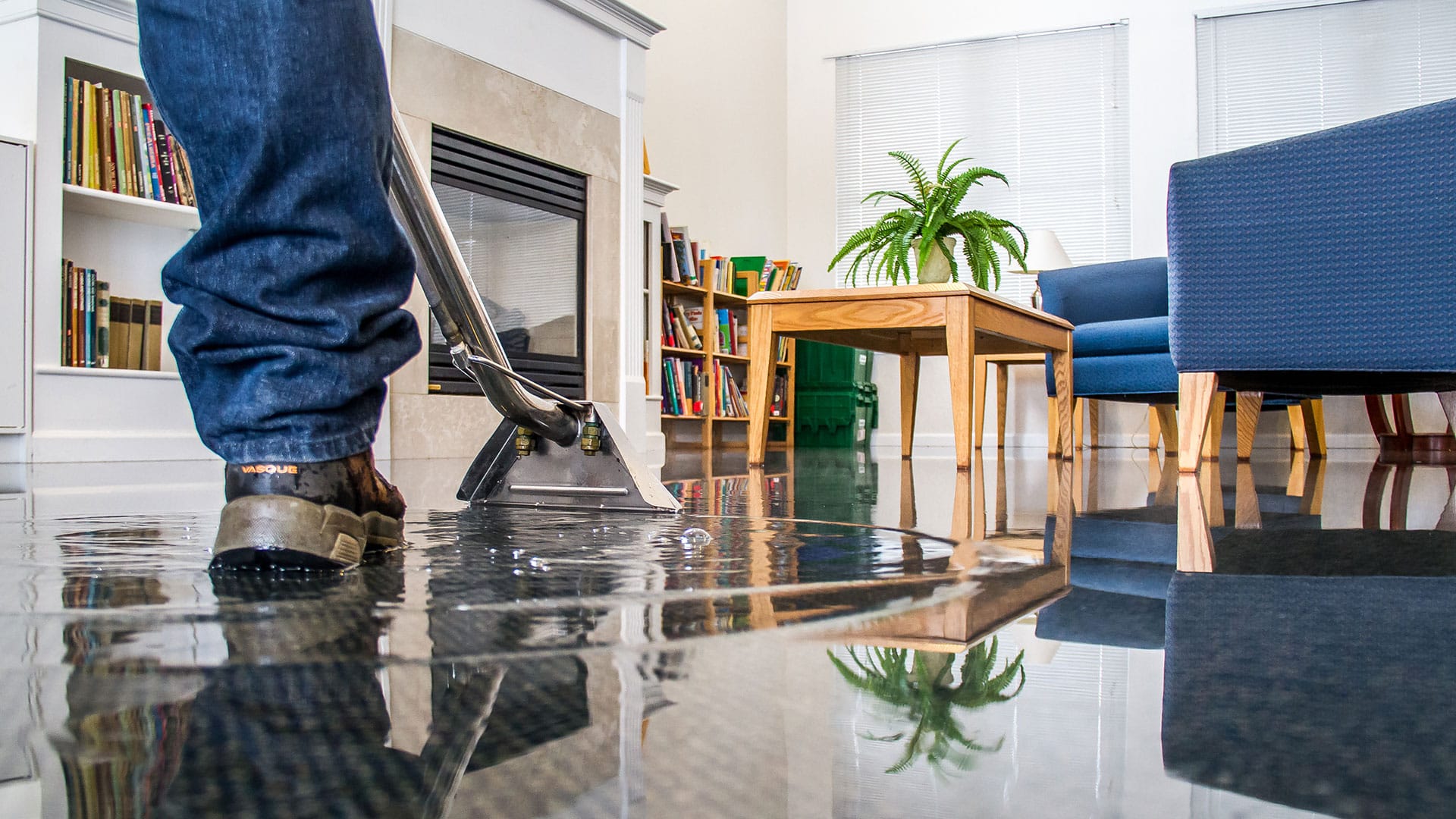Trusted Water Damage Repair Services for Residential and Commercial Properties
Trusted Water Damage Repair Services for Residential and Commercial Properties
Blog Article
The Refine of Water Damage Clean-up: Ensuring Your Home Is Restored Efficiently
Water damages can be a difficult obstacle for homeowners, requiring a organized and careful cleanup process to bring back safety and security and functionality. Initially, an extensive analysis is crucial to identify the extent of the damage and establish the suitable removal procedures. Following this, reliable water removal techniques play an essential function in minimizing further damage. The nuances of drying out, sterilizing, and eventual repair are similarly important and usually neglected. Understanding these phases can make a considerable difference in the result of your home's remediation, triggering a closer look at what each step entails.
Examining the Damages
Upon uncovering water damages, the initial action is to thoroughly assess the level of the effect. This first evaluation is vital, as it helps determine the essential actions for effective cleaning and restoration. Begin by examining the influenced areas, including wall surfaces, ceilings, floors, and personal items, to determine the resource of the water invasion, whether from flooding, leakages, or condensation.
Recording the damage is important for both insurance policy claims and intending reconstruction efforts - damage restoration services. Use pictures and written notes to catch the intensity of the damage, noting any kind of damaged architectural components and materials. Pay unique interest to locations that may not be quickly noticeable, such as behind walls and under carpets, as concealed wetness can lead to more problems, including mold development
Additionally, assess the timeline of the water exposure. The longer the materials remain damp, the better the capacity for damage. Understanding the period of exposure will certainly notify the urgency of removal efforts. Inevitably, a detailed assessment prepares for a successful water damages clean-up procedure, making sure that all affected locations are dealt with properly and completely.
Water Removal Methods

Specialists typically employ completely submersible pumps for bigger quantities of water, which can rapidly ease flooding in cellars or various other affected areas. For smaller quantities, wet/dry vacuums are commonly made use of to remove recurring dampness from carpets and hard surfaces. Additionally, using portable extractors enables targeted removal in restricted areas or areas with delicate materials.
In instances of contaminated water, such as sewage or floodwater, advanced extraction methods may entail using biohazard tools to ensure security and conformity with wellness guidelines. High-powered removal tools are important in lessening water retention in structural materials, which can lead to mold development and architectural damage otherwise attended to immediately.
Eventually, the efficiency of water extraction strategies plays a crucial role in the total success of the water damages clean-up process, laying the groundwork for succeeding repair efforts.
Drying and Dehumidification
Once standing water has actually been properly extracted, the next essential phase in the water damage cleaning process is drying and dehumidification. This step is crucial to avoid more damage and mold and mildew development, which can occur within 24 to 2 days in moist environments.
To attain efficient drying, specific equipment such as industrial-grade air moving companies and dehumidifiers is utilized. Air moving companies distribute air throughout wet surfaces, improving evaporation prices, while dehumidifiers reduce moisture levels airborne, advertising a helpful atmosphere for drying out. The mix of these tools makes certain that moisture is extracted from walls, floorings, navigate here and furnishings, allowing them to dry extensively.
It is necessary to monitor the drying procedure closely. Experts typically use wetness meters to examine the dampness web content in different materials, making sure that all affected locations reach appropriate dry skin degrees. This meticulous strategy aids to avoid surprise dampness pockets that might bring about structural damages or undesirable mold development.

Cleaning and Disinfecting
After the drying out and dehumidification stage is total, the next crucial action in water damage clean-up is cleaning and disinfecting the impacted locations. This procedure is essential to prevent the growth of mold, germs, and other pathogens that thrive in damp environments.
The cleansing phase generally entails eliminating any type of debris, dirt, and pollutants from surface areas making use of specialized other cleaning up representatives. For hard surface areas, a combination of soap and water or industrial cleansing items is typically utilized. Soft materials, such as furniture and carpets, might require a lot more comprehensive cleaning methods, consisting of heavy steam cleaning or deep extraction strategies, to guarantee comprehensive sanitation.

Sterilizing follows cleaning, using EPA-approved anti-bacterials to eliminate dangerous microorganisms. This step is necessary, particularly in areas that might have entered into call with floodwaters or sewer, as these resources can pose severe wellness risks.
In addition, it is essential to attend to any staying odors, which might call for making use of odor neutralizers or innovative strategies like ozone therapy. Correct cleaning and disinfecting not just bring back the safety and health of your home but also lay the foundation for effective reconstruction and repair services in succeeding phases of the water damages cleaning process.
Repair and Repair Services

As soon as the evaluation is complete, reconstruction efforts can start. Additionally, floor covering might call for comparable attention, depending on the level of water direct exposure.
It is important to involve skilled restoration experts throughout this process, as they Homepage possess the expertise to deal with complex fixings effectively. They can help alleviate potential future concerns, such as mold growth or architectural instability, hence guaranteeing a secure and habitable living atmosphere. Inevitably, reliable restoration and repair work bring back the home's integrity and boost its total value.
Verdict
To conclude, the procedure of water damage cleaning is critical for restoring a home to its pre-damage problem. Each stage, from evaluating the damage to applying effective water removal methods, followed by comprehensive drying out, sanitizing, and essential repairs, plays an important role in guaranteeing security and conformity with building criteria. Reliable execution of these steps not only mitigates immediate damages yet additionally enhances the long-lasting honesty and value of the home.
Water damages can be a difficult obstacle for house owners, necessitating a organized and precise clean-up procedure to restore security and performance. Inevitably, a detailed analysis lays the groundwork for a successful water damage cleanup procedure, making sure that all affected areas are resolved successfully and completely.
Reliable water extraction strategies are essential in reducing damages and avoiding more complications following a water invasion occasion.In conclusion, the process of water damage cleaning is vital for recovering a home to its pre-damage problem. Each stage, from evaluating the damages to executing reliable water removal strategies, followed by thorough drying out, sterilizing, and essential fixings, plays a crucial function in making sure security and conformity with building standards.
Report this page